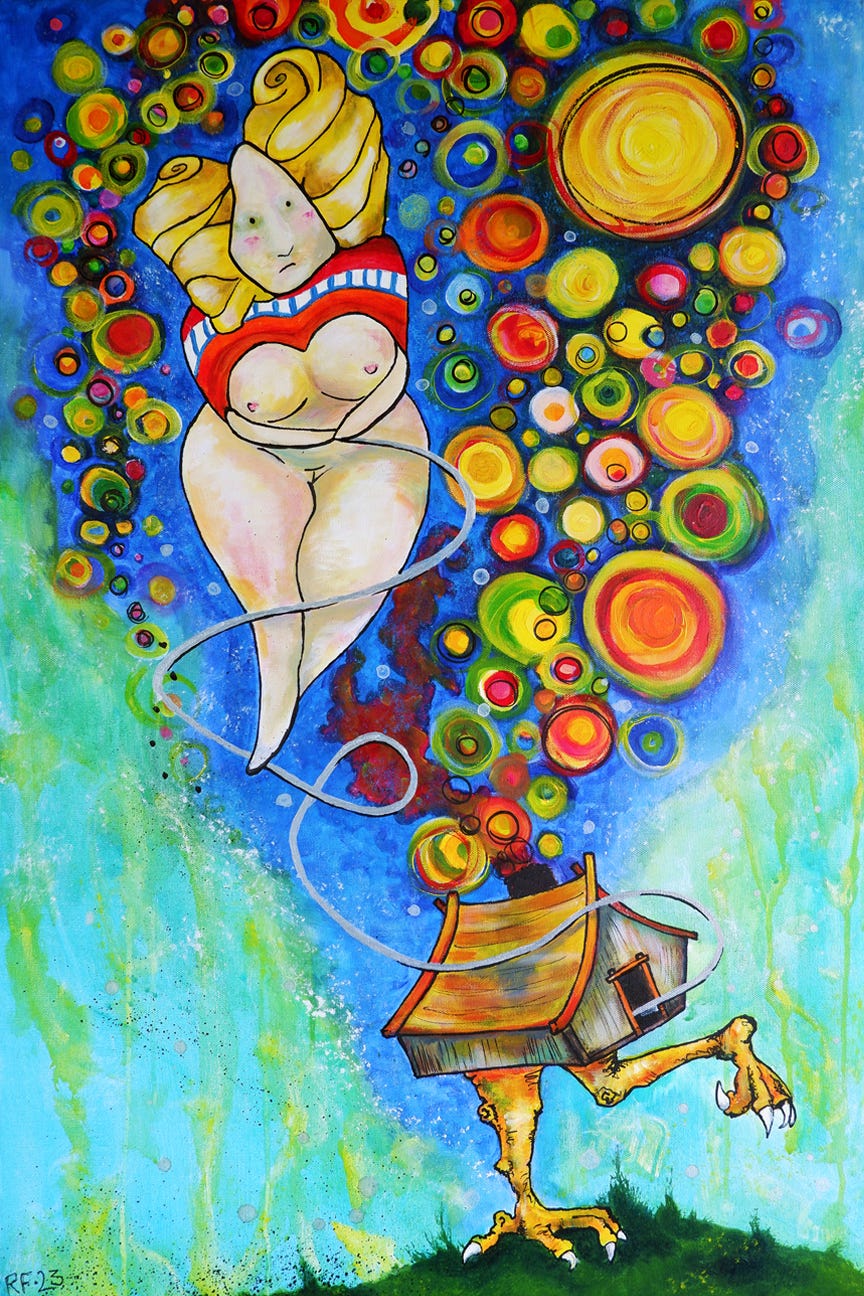Baba Jaga
this is an unedited version of a story that will be featured in the gallery book for my project Wypominky Kobiety.
Baba Yaga lives in a house that walks around on chicken legs. She has iron teeth and will gnash you up in them if you are bad. She lives far away, but can y through the sky, rowing along in a mortar and pestle as if it is a boat. Don’t misbehave or Baba Yaga will come and get you. She knows where to find all the unrepentant children.
When I heard this story I thought Baba’s life sounded pretty good. She had her own house- no children or men to look after. She flies around in the sky or feeds her chicken house or maybe tends her garden. Occasionally she punishes the wicked. Sort of a side gig, I would guess. That’s the kind of life I wanted to live!
In the folk stories, the old hag is reviled: ugly, vicious, husbandless and childless. She steals the children of more socially acceptable women because she has none of her own. She destroys on a whim and tears away laughing, mocking the proper order of things. How did this come to happen to her? Was her exile self-imposed and later misinterpreted? Is her malignancy solely the propaganda of early patriarchy’s excesses? I don’t know how to answer questions about when the women became the monsters. I do know that the old hag is my ancestor. In the very oldest of times the old hags would have been the historians, the artists, the healers and spiritualists. Whatever has happened to poor Baba Jaga?
Baba- babcia, busha, babuszka, grandmother spider. Their stories live inside each of us, pushing out through the layers of time. In the middle of our human nesting doll, somewhere, there is a beginning. Perhaps there also is a child Baba Jaga whose name has been lost to time. A little girl dreaming of her own flower beds, a silver thread connecting her to her past and her future. She might look up to the sky and wonder just how much flying she can get away with.




